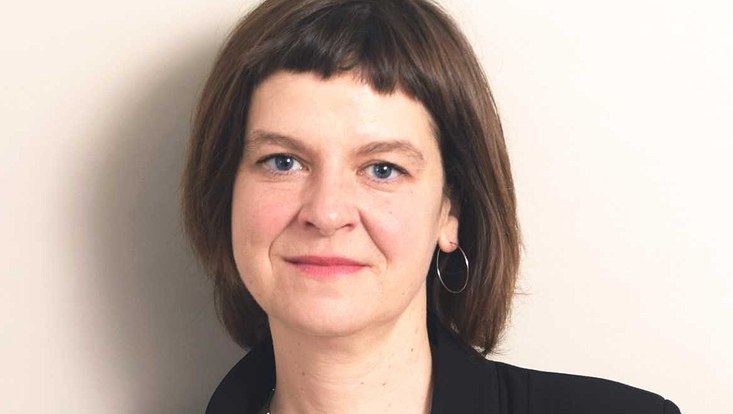Dr. Tanja Klemm

Curriculum
Tanja Klemm is an art historian. She started her dissertation (2010, Humboldt-Universität zu Berlin) on the relationship between body and perception in the late Middle Ages and Renaissance at the graduate school "Bild-Körper-Medium. Eine anthropologische Perspektive" at Karlsruhe University of Arts and Design. Subsequent positions included the interdisciplinary research group "Funktionen des Bewusstseins" at the Berlin-Brandenburg Academy of Sciences, Berlin (2006-2010), the Art Historical Institute in Florence, Max Planck Institute (2010), the Art Historical Seminar of the University of Basel (2011-2013) and the International Kolleg Morphomata, University of Cologne (2010-2011; 2014-2017, and since 2018 in the Department of Art Studies at the University of Konstanz, most recently as academic coordinator of the graduate school "Rahmenwechsel ". As a freelance art historian, she works as a curator, mediator and publicist, e.g. for Kunstforum International.
Research focus: Late Middle Ages/Early Modern Period: miracle-working images, healing artifacts, ' pictorial magic', natural philosophy and medicine. Cross-period and cross-cultural research interests: ceramics/clay as material, 'Raw Art', art and ecology (with emphasis on water), material and crafts (skills and know-how), tactility, "sensitive objects". Theoretical focus: visual practices and (historical) phenomenologies of embodiment, enactivism, (historical) visual anthropology, art history and ethnology, visual studies, ethics of making.
Publications (selection)
- Kunstgeschichte, Kunsttechnologie und Restaurierung: Neue Perspektiven der Zusammenarbeit. Eine Einführung/ Art History, Conservation and Conservation Science: New Perspectives for Cooperation. An Introduction, ed. together with Aviva Burnstock, Tilly Laaser, Karin Leonhard, Wibke Neugebauer and Anna von Reden, Berlin: Reimer 2024.
- „‚Tactile regimes‘ und ‚tactile communities‘ in Malerei und wundertätigen Bildwerken um 1500“, in: Berührung. Taktiles in Kunst und Theorie, ed. by Kristin Marek and Carolin Meister, Brüssel und Paderborn: Brill Fink 2022, pp. 19-47.
- (with Stephanie Dieckvoss) „Ideas and Processes of Making in Art School Education Worldwide: Views beyond Europe“/ „Materialfertigkeiten in der Kunstausbildung: außereuropäische Perspektiven“ in: Handmade Tales – Diversity Art Life, ed. by Hochschule für Bildende Künste Dresden, in cooperation with Staatliche Kunstsammlungen Dresden, Dresden 2021, pp. 41–57.
- „Geisterwelten und Wasserwelten“/ „Spirit Worlds and Water Worlds“, in: Sarah Bildstein, 100 Spectres. Wien: Verlag für moderne Kunst 2021, n.p.
- „Life from within: Physiology and Talismanic Efficacy in Marsilio Ficino's De Vita (1489)“, in: Representations 133, 1 (2016), ed. by Hannah Baader, Ittai Weinryb and Gerhard Wolf, pp. 110–129.
- Bildphysiologie. Wahrnehmung und Körper in Mittelalter und Renaissance, Berlin: Akademie Verlag 2013.
Research project: Balances of forces: Leonardo's moving figure in the third part of his Libro di pittura
Running in flight, walking slowly, standing in a pondered manner; muscular movements, facial expressions, stirrings of the soul, processes of growth: In the third part of Leonardo da Vinci's Libro di pittura, human (and animal) figures are defined and shaped by movements in their variability in a more consistent and finely differentiated way than ever before.
My research project is devoted to these movimenti, moti, atti, attitudini, azzioni, as they are called by Leonardo. Starting from the basic idea in the Libro that figurative movement is first created by "destroying the equilibrium", it examines the various motifs of movement and inquires about the proportionalities of forces of weight and movement they each conceive, how they become perceptible in the human figure and how they can be realized in painting. In this context, it will also be a matter of relating Leonardo's considerations to concepts of force, measure, weight and movement in the natural philosophy of the time. Anatomical and mechanical concepts will play just as important a role here as the scientia de ponderibus or the medical doctrine of the res naturales.
Research results: Balances of forces: Leonardo's moving figure in the third part of his Libro di pittura
The fellowship gave me the opportunity to systematically examine the dynamic principles of the human body and its representation in the third part of Leonardo da Vinci’s Book on Painting (Libro di pittura).
One focus was on figures in ‘violent’ rotational movements. Based on late medieval statics and mechanics (Corpus of scientia de ponderibus), the concept of Impetus and the Aristotelian principle of violence (violenzia), these figures present various ‘mechanical principles’ in both text and image (tense bow, coiled spring, single balance, circling slingshot, etc.). In each of these ‘mechanical principles’, the four powers (potentie), i.e. motion (moto), weight (peso), force (forza), percussion and blow (percussione), relate to each other in different ways: circular, antagonistic, reinforcing, or transformative. Significantly, the discussions of the statics and mechanics of the moving figure are framed by chapters dealing with the adequate representation (decoro) of ‘mental movements and states’ (moti mentali, accidenti mentali). These chapters draw primarily on medical concepts of force, including affect theory. Therefore, Leonardo does not compose a mechanical human puppet, but rather an enlivened and animated figure – a figure with attitude, feeling, intention, and expression, permeated by concepts of force from different natural philosophical backgrounds.
Mastery of adequate representation, in Leonardo’s view, shines through when the central rule of ‘good composition’ (buona membrificazione) of the human figure at rest and in motion converges with proficiency of the central aesthetic concepts of painting — ‘potential for movement’ (prontitudine) and ‘liveliness’ (vivacità).
